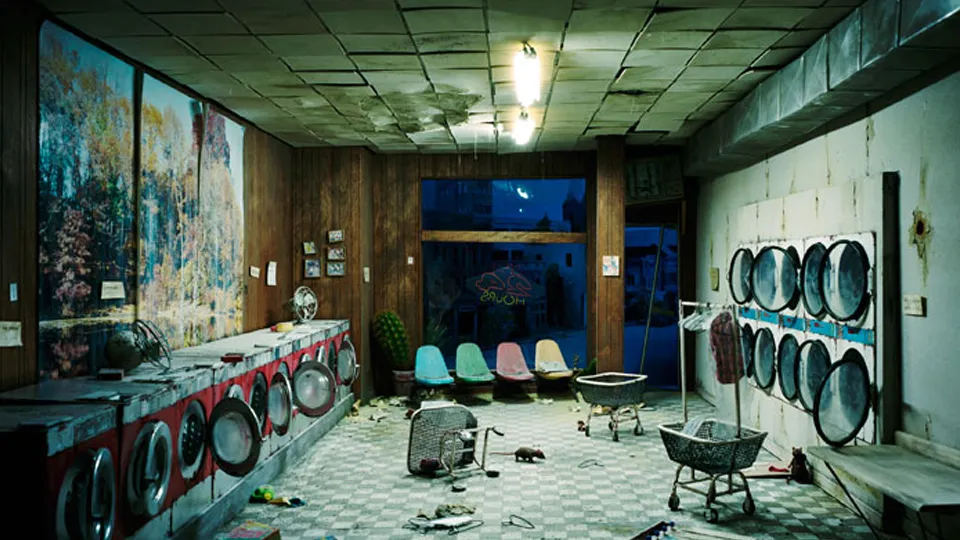The fashion industry is experiencing a revolution where electronic waste meets sustainable design, creating innovative clothing that’s both stylish and environmentally responsible. ♻️
In an era where technology evolves at breakneck speed, electronic waste has become one of the fastest-growing waste streams globally. Simultaneously, the fashion industry faces increasing scrutiny for its environmental impact. But what if these two challenges could become part of the solution? The intersection of e-waste recycling and fashion innovation is creating a new paradigm where discarded electronics are being transformed into wearable art, functional garments, and accessories that make bold statements about sustainability.
This emerging trend isn’t just about recycling; it’s about reimagining our relationship with waste, technology, and clothing. From circuit board jewelry to fabric woven with recycled copper wires, designers and innovators worldwide are proving that trash can indeed become treasure, and that sustainable fashion doesn’t have to compromise on style or functionality.
The Growing Mountain of Electronic Waste 📱
Electronic waste represents one of the most pressing environmental challenges of our time. According to recent estimates, the world generates over 50 million tons of e-waste annually, with only a fraction being properly recycled. This waste contains valuable materials including gold, silver, copper, and rare earth elements, alongside toxic substances that can harm ecosystems when improperly disposed.
The rapid obsolescence of electronic devices exacerbates this problem. Smartphones, laptops, tablets, and other gadgets are replaced with increasing frequency, often not because they’ve stopped functioning, but because newer models offer marginally better features. This consumption pattern has created a disposable culture around technology that’s unsustainable in the long term.
Traditional e-waste recycling methods, while important, often involve energy-intensive processes and don’t always recover the maximum value from discarded electronics. This is where creative innovation meets environmental necessity, opening doors for alternative approaches that can extract value while reducing environmental impact.
Fashion’s Environmental Wake-Up Call 👗
The fashion industry has long been identified as one of the world’s major polluters, responsible for significant carbon emissions, water consumption, and chemical pollution. Fast fashion, in particular, has created a throwaway culture where garments are worn briefly before being discarded, contributing to massive textile waste.
Consumers are becoming increasingly aware of fashion’s environmental footprint, driving demand for sustainable alternatives. This shift in consciousness has created opportunities for brands and designers willing to embrace circular economy principles, where waste becomes a resource rather than a problem to be managed.
The convergence of technological innovation and sustainable fashion thinking has created fertile ground for experimentation. Designers are no longer limited to traditional textiles; they’re exploring materials that tell stories about resource recovery, innovation, and environmental responsibility.
How Electronics Become Wearable Materials ⚡
The transformation of electronic waste into clothing involves several innovative processes, each suited to different types of materials and desired outcomes. Understanding these methods helps appreciate the technical sophistication behind these eco-friendly garments.
Material Extraction and Processing
The first step involves carefully dismantling electronic devices to separate different material types. Precious metals like gold, silver, and copper can be extracted and refined, then incorporated into textiles or used for decorative elements. These metals might be woven into fabrics, creating conductive threads that add both aesthetic appeal and potential functionality.
Plastic components from electronics, which constitute a significant portion of e-waste, can be cleaned, shredded, and processed into polymer fibers. These recycled plastic fibers can then be spun into yarn and woven into durable fabrics suitable for various clothing applications. The quality of these recycled textiles has improved dramatically, rivaling conventional synthetic fabrics in performance and appearance.
Circuit Board Transformation
Printed circuit boards (PCBs), with their distinctive green appearance and intricate patterns, have become popular materials for accessories and decorative elements. Designers cut, shape, and polish these boards into jewelry, buttons, embellishments, and statement pieces that celebrate the aesthetic of technology while giving new life to what would otherwise be hazardous waste.
Some innovators are going further, grinding circuit boards into fine particles that can be incorporated into composite materials or coatings, creating unique textures and finishes for garments and accessories. These applications showcase how e-waste can become not just acceptable but desirable in fashion contexts.
Wire and Cable Repurposing
Copper wiring, commonly found in electronic devices, offers particular potential for textile applications. The metal’s conductivity, durability, and natural antimicrobial properties make it valuable for creating smart fabrics. When properly processed and integrated with traditional textiles, copper threads can enable garments with embedded technology, from heating elements to biometric sensors.
Cable insulation, typically made from plastics, can be processed similarly to other plastic e-waste components, providing raw material for recycled fiber production. Even the colorful coatings on wires inspire design elements, as creative designers incorporate these vibrant materials into patchwork designs and mixed-media pieces.
Pioneering Brands and Designers Leading the Movement 🌟
Several forward-thinking brands and individual designers have embraced e-waste as a fashion material, creating collections that challenge conventional notions of both technology and clothing. These pioneers demonstrate that sustainability and style can coexist beautifully.
Companies specializing in recycled polyester have developed sophisticated processes for transforming plastic e-waste into high-quality fabrics. These textiles perform comparably to virgin materials while significantly reducing environmental impact. Major sportswear brands have begun incorporating these materials into their product lines, bringing e-waste-derived fashion to mainstream markets.
Independent designers are creating haute couture pieces that feature visible electronic components, celebrating rather than hiding the technological origins of their materials. These garments make powerful statements about consumption, waste, and the potential for transformation. Circuit board corsets, wire-adorned jackets, and dresses incorporating LED components from discarded electronics blur the lines between fashion, art, and environmental activism.
Jewelry designers have found particularly rich possibilities in e-waste materials. Rings, necklaces, earrings, and bracelets crafted from circuit boards, capacitors, and other electronic components have gained popularity among consumers seeking unique, conversation-starting accessories with meaningful environmental credentials.
The Technical Challenges of E-Waste Fashion 🔧
Transforming electronic waste into wearable clothing presents numerous technical challenges that innovators must overcome. Understanding these obstacles helps appreciate the sophistication required to make this transformation successful.
Safety and Toxicity Concerns
Electronic devices contain potentially hazardous materials including lead, mercury, cadmium, and flame retardants. Ensuring these substances are removed or neutralized before materials contact skin is paramount. Rigorous testing and processing protocols must be established to guarantee consumer safety while maintaining environmental benefits.
Proper decontamination processes add complexity and cost to production, but they’re non-negotiable for creating safe wearable products. This requirement drives innovation in cleaning and processing technologies, benefiting the broader recycling industry beyond fashion applications.
Quality and Durability Standards
Clothing made from recycled e-waste materials must meet the same performance expectations as conventional garments. Fabrics need appropriate strength, flexibility, colorfastness, and washability. Achieving these properties from recycled sources requires sophisticated processing and sometimes blending e-waste-derived materials with other fibers.
Consistency presents another challenge, as electronic waste varies significantly in composition depending on device type and age. Manufacturers must develop flexible processes that can accommodate this variability while producing textiles meeting consistent quality standards.
Scalability and Economics
While small-scale artisanal production of e-waste fashion is feasible, scaling up to industrial levels presents significant challenges. Collection systems must aggregate sufficient quantities of specific e-waste types, processing facilities require substantial capital investment, and distribution networks need development.
Economic viability remains crucial for long-term success. Currently, many e-waste fashion products command premium prices due to their novelty and labor-intensive production. For this sector to significantly impact overall waste reduction and fashion sustainability, processes must become efficient enough to compete with conventional production methods on cost.
The Environmental Benefits Quantified 🌍
The environmental case for e-waste fashion extends beyond simply diverting waste from landfills. When comprehensively analyzed, the benefits become compelling across multiple dimensions.
- Resource Conservation: Using recycled materials reduces demand for virgin resources, decreasing mining activities and their associated environmental destruction
- Energy Savings: Processing recycled materials typically requires significantly less energy than extracting and refining virgin materials
- Emissions Reduction: Lower energy consumption translates to reduced greenhouse gas emissions throughout the production cycle
- Toxic Waste Prevention: Proper e-waste recycling prevents hazardous materials from contaminating soil and water systems
- Landfill Diversion: Every kilogram of e-waste transformed into clothing is material kept out of already overburdened waste management systems
Studies suggest that producing clothing from recycled e-waste materials can reduce carbon footprint by 30-70% compared to conventional production, depending on specific materials and processes. Water consumption similarly decreases substantially, addressing one of fashion’s most significant environmental impacts.
Smart Fabrics and Functional Fashion 📲
Beyond sustainability credentials, e-waste materials offer unique functional possibilities that traditional textiles cannot match. The conductive properties of recovered metals enable creation of smart fabrics with embedded technology, opening exciting possibilities for fashion’s future.
Garments incorporating conductive threads from recycled electronics can integrate with smartphones and other devices, enabling functionality like gesture control, biometric monitoring, and adaptive heating or cooling. These features transform clothing from passive covering to active interface, enhancing both utility and user experience.
The convergence of wearable technology and sustainable fashion creates products appealing to tech-savvy consumers who also prioritize environmental responsibility. This dual appeal may prove crucial for mainstream adoption, demonstrating that sustainable choices need not involve sacrifice or compromise.
Researchers are developing fabrics that can harvest energy from body heat or movement using recovered thermoelectric materials from electronics, potentially enabling self-charging wearable devices. Such innovations point toward a future where clothing actively contributes to our technological ecosystem while being produced sustainably.
Consumer Attitudes and Market Potential 💚
Understanding consumer perspectives on e-waste fashion is crucial for assessing its growth potential. Research indicates complex attitudes influenced by environmental concern, aesthetic preferences, price sensitivity, and perceived quality.
Surveys consistently show growing consumer interest in sustainable fashion, particularly among younger demographics. However, this stated preference doesn’t always translate into purchasing behavior, with factors like price, convenience, and style influencing final decisions. E-waste fashion brands must navigate these competing priorities to build sustainable business models.
The uniqueness factor works in e-waste fashion’s favor, as consumers increasingly seek distinctive pieces that express individual identity and values. Garments and accessories with visible technological elements appeal to those wanting to make statements about innovation and environmental consciousness simultaneously.
Education plays a vital role in market development. Many consumers remain unaware that e-waste fashion exists or don’t understand the processes involved. Effective storytelling about material origins, transformation processes, and environmental benefits can significantly influence purchasing decisions, turning sustainability from abstract concept to compelling narrative.
Regulatory Landscape and Industry Standards 📋
As e-waste fashion grows from niche experiment to viable industry segment, regulatory frameworks and quality standards become increasingly important. These structures protect consumers, ensure environmental benefits are genuine, and create level playing fields for businesses.
Existing e-waste regulations primarily focus on collection and recycling rather than secondary use in products like clothing. This creates regulatory ambiguity that innovators must navigate carefully. Some jurisdictions are beginning to develop specific guidelines for e-waste-derived consumer products, addressing safety testing, labeling requirements, and environmental claims.
Industry organizations are developing voluntary standards and certification programs to establish credibility and consumer confidence. These initiatives define best practices for material processing, safety testing, and environmental impact assessment, helping distinguish genuinely sustainable products from superficial greenwashing.
International variation in regulations presents challenges for brands operating across borders, requiring flexible compliance strategies and sometimes region-specific product modifications. Harmonization efforts are underway but remain incomplete, reflecting the emerging nature of this sector.
The Future Landscape of Sustainable Tech Fashion 🚀
Looking ahead, the intersection of electronic waste and fashion appears poised for significant growth and evolution. Several trends and developments suggest how this sector might develop over coming years.
Technological advances in material processing will likely make e-waste recycling more efficient and cost-effective, improving economic viability while enhancing environmental benefits. Automated sorting systems, advanced chemical processes, and innovative manufacturing techniques will increase the range and quality of materials recoverable from electronic waste.
Collaboration between technology companies and fashion brands could accelerate innovation and adoption. Electronics manufacturers might design products with end-of-life fashion applications in mind, simplifying material recovery and creating closed-loop systems where today’s devices explicitly become tomorrow’s clothing.
Digital technologies including blockchain and IoT could enhance transparency and traceability in e-waste fashion supply chains, allowing consumers to verify sustainability claims and understand their garments’ complete lifecycle stories. This transparency builds trust and supports premium positioning for genuinely sustainable products.
The concept may expand beyond clothing into broader lifestyle applications, with e-waste materials appearing in furniture, automotive interiors, and architectural elements. This diversification would increase market opportunities while amplifying environmental impact through greater waste diversion.
Making a Difference Through Your Wardrobe Choices ✨
For individuals interested in supporting this sustainable fashion movement, several practical steps can make meaningful differences. Consumer choices collectively shape market development and incentivize innovation.
Researching brands and their environmental practices helps identify genuinely sustainable options versus superficial greenwashing. Look for transparent supply chains, third-party certifications, and detailed information about material sources and processing methods. Supporting companies that prioritize these factors sends market signals encouraging broader industry adoption.
When purchasing e-waste-derived fashion items, consider quality and longevity rather than just initial price. Well-made garments worn frequently over extended periods deliver far greater environmental benefits than cheap items quickly discarded, regardless of their recycled content.
Proper care extends garment lifespan, maximizing the environmental investment embodied in production. Following care instructions, repairing rather than replacing damaged items, and eventually recycling garments at end of life completes the circular economy loop.
Advocacy matters beyond individual purchasing decisions. Discussing e-waste fashion with friends, sharing information on social media, and supporting relevant policy initiatives amplifies impact beyond personal consumption. Collective action drives systemic change more effectively than isolated individual choices.
The transformation of electronic waste into fashionable, functional clothing represents more than clever recycling—it embodies a fundamental shift in how we think about resources, consumption, and value. As technology becomes ever more integral to daily life and fashion remains a primary form of self-expression, their intersection creates powerful opportunities for positive change. By embracing innovation, supporting visionary brands, and making thoughtful choices, we can all participate in this exciting movement toward a more sustainable and stylish future. 🌿
Toni Santos is a visual explorer and microscopic storyteller who delves into the hidden aesthetics of microbial life. Through a fusion of scientific curiosity and artistic insight, Toni transforms the overlooked world of bacteria, fungi, and cellular forms into mesmerizing visual narratives—revealing the elegance, symmetry, and chaos that thrive at microscopic scales.
Rooted in a fascination with life forms too small to see yet too intricate to ignore, Toni’s work captures the bizarre beauty of microbial colonies, biofilms, and spore patterns. These images aren’t just representations—they are celebrations of the artistic intelligence encoded in nature’s tiniest architects.
With a background in visual design and bio-inspiration, Toni merges scientific imaging techniques with creative expression, transforming petri dish cultures, fluorescence microscopy, and microbial textures into works that provoke both wonder and contemplation.
As the creative force behind Vizovex, Toni offers curated visual studies, microbial-inspired designs, and essays that bridge art and microbiology—inviting viewers to reimagine what beauty means at the edge of perception.
His work is a tribute to:
The hidden geometries of living systems
The surprising elegance of microbial growth
The role of micro-life in shaping visual culture
Whether you’re a scientist, artist, or simply curious about the unseen world that sustains us, Toni opens a window into a universe where life writes poetry in colonies and patterns, one microbe, one frame, one breathtaking detail at a time.





